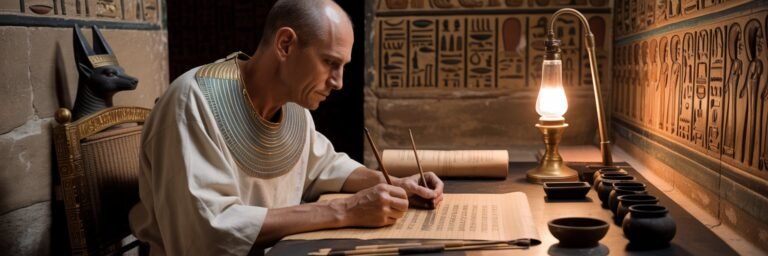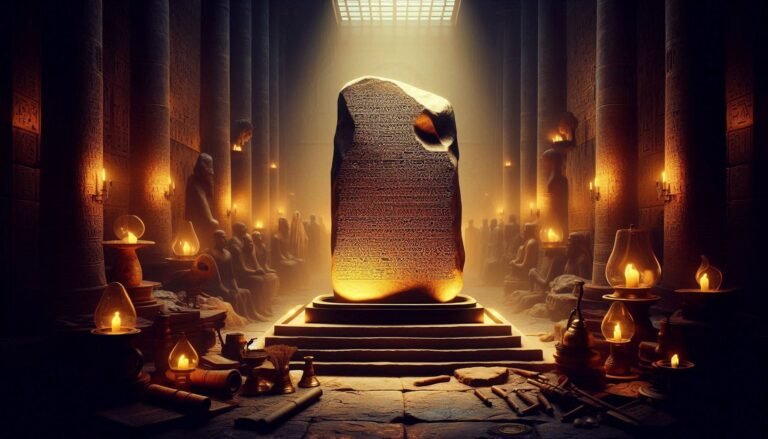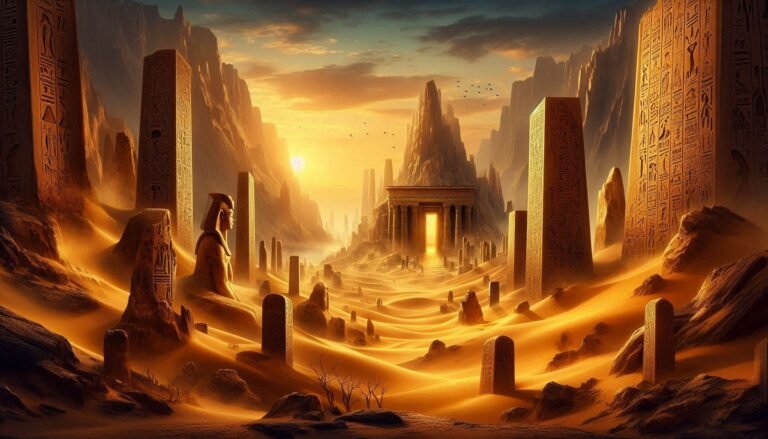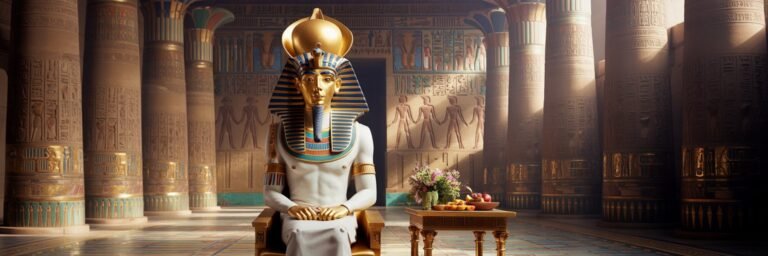The legacy of ancient Egypt extends far beyond its place as one of the world’s oldest civilizations. It is a history that stirs the imagination, encapsulates the past and endures in the present. For millennia, the culture, philosophies, religious beliefs and innovations of this ancient society have shaped modern existence in profound ways. From the tangible architecture mirrored in modern day edifices to the mystic symbolism that permeates in our art and culture, these echoes from the shores of the Nile continue to resonate with us in the contemporary era.
HISTORICAL BACKGROUND
The civilization of ancient Egypt emerged along the fertile floodplains of the Nile River around 3100 B.C., boasting a remarkably sophisticated society known for its advanced science, grand architecture, and rich spiritual life. Egypt’s dynastic age began with the reign of Narmer and culminated with Cleopatra VII. Throughout these turbulent epochs, Egypt was a prosperous, intellectual, and highly creative civilization.
Notable among Egypt’s contributions to the ancient world were hieroglyphic writing and papyrus, extensive advancements in medicine, astronomy and agriculture, and monumental architectural feats, exemplified by the Pyramids of Giza and the Sphinx. The stability and resources offered by the Nile River region allowed for the growth of an elaborate civilization with complex belief systems, artistic endeavors, and scientific discoveries that continue to fascinate and influence scholars and enthusiasts alike.
THEORIES AND INTERPRETATIONS
Many theories and interpretations have sprung from the study of ancient Egypt. The psychedelic hypothesis, for instance, posits that the ancient Egyptians used blue lotus and other psychoactive plants as part of their religious rituals. This theory, though controversial, has piqued the interest of anthropologists and archaeologists alike.
Moreover, researchers have grappled with the interpretation of ancient Egyptian art, administrative structures and the hierarchical practices. The polytheistic religion of ancient Egyptians serves as a repository of metaphors and allegories. The intricate relationships between deities and the mythology surrounding them is often used by researchers to understand the ancient sociopolitical structures.
MYSTERIES AND CONTROVERSIES
Ancient Egypt’s richness has naturally spawned numerous mysteries and controversies, some of which persist to this day. The construction methods used in the building of the pyramids, for instance, remain a source of intense debate. While mainstream academics support the theory that a large workforce of local laborers accomplished this monumental task, alternative theories propose the use of external ramps, kites or even alien intervention.
Further, the debate over the ancient Egyptians’ skin color and racial identity persist, marked by controversies regarding the representation in popular media and academic circles where a predominantly Eurocentric lens has often misinterpreted the racial origins of ancient Egypt.
SYMBOLISM AND CULTURAL SIGNIFICANCE
The symbolism of ancient Egypt, so deeply interwoven in its architecture, writing systems, and religious practices, holds extensive cultural significance. The ankh, known as the key of life; the was scepter, representing power and dominion; the djed, a symbol of stability; and the Eye of Horus, a symbol of health, protection, and royal power, to name but a few examples, reverberate in modern cultural expressions, artwork, literature, and symbolism. The allegorical nature of Egyptian mythology continues to inspire writers and filmmakers, generating a plethora of cultural material imbued with Egyptian symbolism.
MODERN INVESTIGATIONS
Contemporary study and investigation into ancient Egypt remains a rich and ongoing endeavor. Developments in technology, including ground-penetrating radars and 3D reconstructions, have allowed scholars to delve further into the mysteries of Egyptian antiquity. High-profile discoveries, including the recent unearthing of a bustling city near Luxor, dubbed ‘Egypt’s Pompeii’, continue to revolutionize our understanding of ancient Egyptian civilization.
Moreover, modern genetic studies continue to unravel the ethnic complexity and antiquity of the population while multidisciplinary approaches shed light on Egyptian trade relations, culinary practices, and medical advancements.
LEGACY AND CONCLUSION
In sum, the legacy of ancient Egypt is deeply embedded within modern society. Its influence pervades science, architecture, art, literature, and cultural symbols. Our understanding and interpretation of the universe and humankind’s place within it carry the imprints of ancient Egyptian thinkers, priests, and artists. Modern medical practices owe a considerable debt to Egyptian physicians, their understanding of anatomy, and their rudimentary yet effective treatments.
While there are controversies and mysteries that still surround ancient Egypt, its major influence on the formation of modern society is irrefutable. The civilization that arose on the banks of the Nile all those millennia ago continues to have a profound effect on our modern identity. As we continue to discover more about this impressive civilization, its legacy will only become more impactful to modern society. Time and again, we are reminded of the truth of philosopher George Santayana’s words: “Those who cannot remember the past are condemned to repeat it.” In the whispers from the tombs and temples of ancient Egypt, we learn about who we were, who we are, and who we might yet become.






